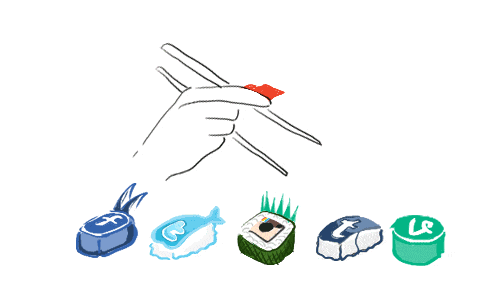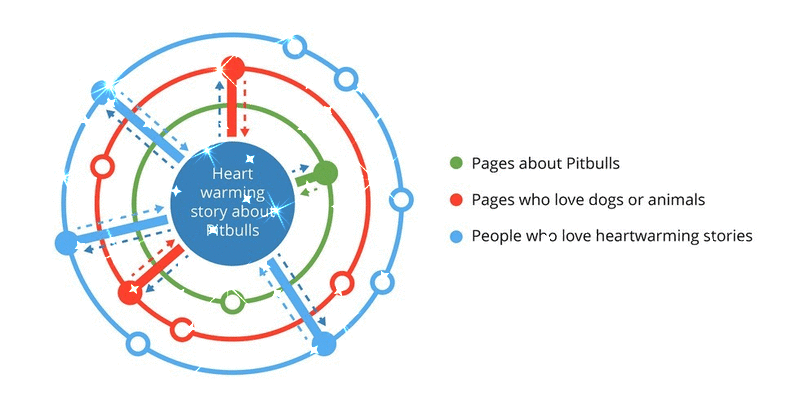RebelMouse Founder and CEO (and former CTO of The Huffington Post) Paul Berry has obsessed about contagious media — and how people consume it — for decades. He chatted with Steve Rubel, Chief Content Strategist at Edelman, for Rubel's podcast on all things storytelling and Content Convergence.
Click here to listen to it for free and get up to speed on ad blocking, audience growth, and the future of media companies and marketing.
In addition (and only in supplementary fashion!), digest some of the key points in our true gif-listicle form.
1. The Core of Contagious Media Hasn't Changed
When The Huffington Post turned on the lights in 2005, it sparked a launching platform for viral content. Everyone had a tab with HuffPo open at work, refreshing when something big happened to see what the big bold headline would be.
The same thing still happens, but now everyone is refreshing social feeds. Publishers declared the home page dead in 2014, but its gradual death began way before that. It doesn't mean contagious media isn't sustainable, but instead, it breathes new life into social.
2. Contagious Media Is Fueled by Belief (or Nonbelief)
Time for a little #throwback: When social media was a lot of shifty chat rooms, RebelMouse CEO Paul Berry and BuzzFeed CEO (and advisor to RebelMouse) Jonah Peretti began a little site called Dog Island. The concept? Register your dog for a one-way ticket to a (fictional) island where it could "live free forever."
The site went viral, making international headlines, and was fueled by two kinds of people: Those who knew it was fictional, but remained bewildered at its existence, and people who believed the island was real and were outraged at the cruelty of pet owners who would give up their best friend to an island of unknown circumstance.
Either way, it was a viral moment that sustained life through belief and nonbelief. The same way your feed is likely dominated today by people impassioned by both beliefs (a touching holiday story that renews your faith in the modern world) or something Donald Trump said (the opposite of faith renewal, depending on your outlook).
3. Stories Must Be so Shareable You Can't Stand It
The only way you can spark the passion of belief or nonbelief is to give your content creators the tools they need to not only create viral moments regularly but also sustain them. Contagious moments are on a huge bell curve, and it's only viable if it is shared. Social distribution allows viral moments to resurface again and again.
Think of when you dip your nose into a great-smelling candle, and it's impossible not to turn to the person next to you and say, "smell this." With content, that should happen five times over.
How do you know what will prompt the curiosity of the masses? Obsess over the dynamic content you see in your feeds every day — the pop culture trends, language directions, and the general oddities of day-to-day life that ignite your interest and the interest of the communities you follow. Build your presence to match, and do it at scale.
4. Your Slogan Must Be Your Editorial Thesis — So Hire More Writers
If you want to master #3, the slogan of your brand, agency, or media company must also be your editorial thesis. You have to wake up every day ready to follow through on that message.
The best way to do this is not through a one-of-a-kind interface that requires an enormous, expensive office with a huge dev team, UX specialists, and SEO consultants. Good content comes from good writers who have already mastered the skill of carrying out a thesis. Hire more of them, build out your content strategy, and see audience growth.
And it can be done organically.
5. Cater Your Publishing to Distribution
Tabitha was able to see success because she won the great content race, but she also got part two right: Distribution. There's a saying at RebelMouse that's a spin on an old favorite: If a tree falls in a forest and nobody hears it, does it make a sound? If you have great content and nobody sees it...well?
The traditional content cycle begins during the "before publish" process — which consists of an SEO guessing game that still has value. But at RebelMouse, we believe the story begins after publish.
It's after publish that your story becomes contagious. You build a bigger audience when your story is shared by profiles and pages with large followings. And the good news is that every topic of content already has a big fan base in the land of distributed platforms.
This is where content now lives
6. There's a Big Human Factor to Distribution
There's a myth out there that writers have seceded from a MacBook and just want to be left to their creative devices, but that isn't true.
Writers are intensely curious and obsess over data just like anyone else. This is why the lines between writers and social media managers must completely blur. Writers should know how to cater their work across platforms and should be given the tools to manage and tweak a distribution strategy that works.
It's the writer-turned-social expert who knows their content in and out and can use an editorial eye to reach out and discover new relationships across platforms. RebelMouse products have ways to maximize every piece of content in the social ecosystem.
7. Media Companies Aren't Tech Companies Anymore
Brands are already beginning to transform, and should all become media companies. If you are hiring a huge team to launch a new website, you are doing it wrong. The nature of the website has changed dramatically and decreased in value since 2012. In 2016, democratize and publish in sync with the constant rhythms of the platforms and be everywhere first.
More good news: Becoming a media company can happen not only more quickly, but also at a fraction of the cost. RebelMouse builds and grows new media properties that give your content creators the tools they need to create contagious moments and sustain them on the daily.








